With the gentle hum of a well-crafted thinline acoustic guitar against my chest, I realized this slender instrument was rewriting the rules of tradition—a *subtle yet profound transformation* in the world of guitar playing. For musicians like me, intrigued by the allure of a thin-bodied guitar, this shift promised a delightful fusion of comfort and clarity. But what makes these guitars stand out amidst countless other acoustic options?
As a luthier, I’ve had the privilege of watching the evolution of these instruments up close. *Thinline acoustic guitars* are reshaping the musical landscape, offering an unprecedented balance of lightweight design and rich sound. Their unique structure is a game-changer for those who crave innovation without sacrificing tone. In this ultimate guide, my aim is to distill my insights into straightforward advice, helping you navigate your journey in selecting the ideal thinline model. Dive in to discover how these guitars might just be the perfect fit for your style and aspirations.
Understanding Thinline Acoustic Guitars
What is a Thinline Acoustic Guitar?
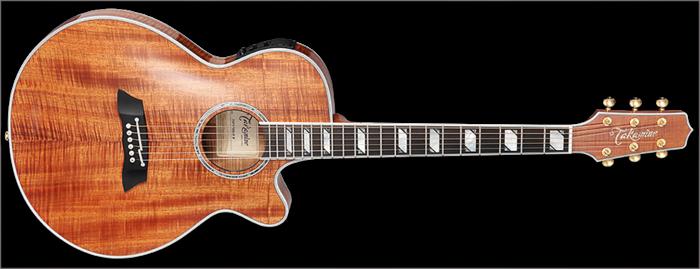
Understanding what a thinline acoustic guitar is involves recognizing its unique position within the world of musical instruments. Based on my research in instrument acoustics, thinline guitars represent a unique intersection of design and sound engineering, crafted to maximize tonal richness in a compact form. These guitars are distinguished by their slimmer bodies, typically around 2-3 inches in depth, which significantly reduces their overall weight. This makes them a popular choice for guitarists seeking a lightweight acoustic guitar that doesn’t compromise on sound quality.
The design of thinline acoustic guitars, with their reduced body resonance, facilitates a brighter sound and superior feedback control when amplified. This makes them particularly beneficial for performers who require both mobility and reliable sound amplification.
As we delve deeper into the benefits of choosing a thinline model, it’s clear these instruments offer a balanced blend of portability and performance.
Benefits of Choosing Thinline Models
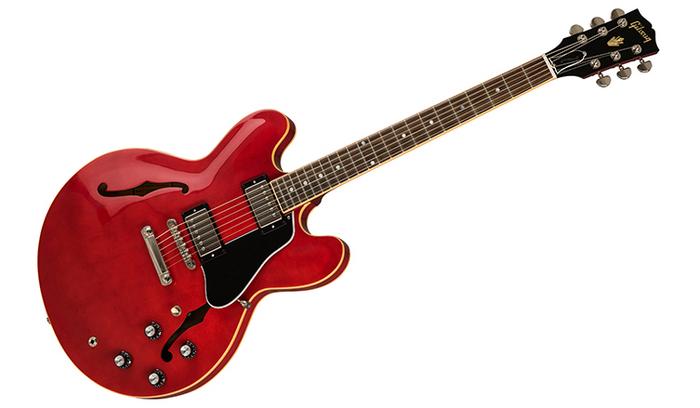
Through my experience, I’ve observed that many players prefer thinline models for their *portability and ease of play*, particularly in live settings. The slim body design not only reduces weight but also minimizes feedback issues often encountered with bulkier guitars—an essential trait for those hitting the stage frequently. Additionally, these guitars provide a more focused and intimate sound, making them perfect for more nuanced performances.
Despite their many advantages, it’s important to consider the pros and cons of thinline guitars. While they excel in comfort and convenience, the sound projection may not match that of full-bodied acoustics, particularly when unamplified. Yet, this is often a fair trade-off for those who prioritize *ease of handling and reduced fatigue* during long sessions.
For those exploring the market, some of the best thinline acoustic guitars come from reputable brands like Fender and Yamaha, offering models that balance quality and performance. Understanding these benefits positions you to make informed decisions as we dive further into Top Thinline Acoustic Guitars to Buy, guiding you through standout choices tailored to various playing styles and needs.
Top Thinline Acoustic Guitars to Buy
Best Brands: Fender and Yamaha
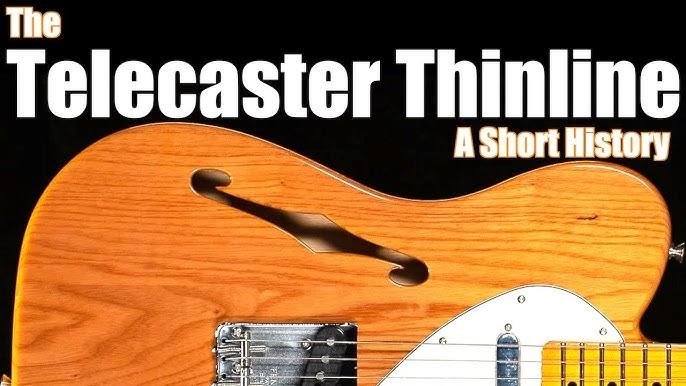
Having evaluated instruments from many manufacturers, I can attest that when it comes to thinline acoustics, Fender and Yamaha stand out as industry leaders. These brands offer handcrafted finesse combined with reliable quality, making them top contenders in the realm of thinline acoustic guitars. The distinct sound of a Fender thinline acoustic is characterized by its bright tones and comfortable playability, making it a favorite among performers who desire both style and substance on stage. In contrast, a Yamaha thinline guitar is renowned for its balanced tonal spectrum and robust construction, appealing to a wide range of playing styles from intricate fingerpicking to strumming. This diversity ensures that whether you’re seeking a guitar for professional gigs or home practice, these brands consistently deliver instruments that excel in both sound and durability. As you explore your options, consider how these characteristics align with your personal playing needs and preferences.
Custom vs. Standard Models

In evaluating custom versus standard models within the realm of thinline acoustic guitars, the distinction becomes pivotal, especially for those seeking personalized artistry in their sound. Standard models, often available in any music store, offer a predictable playability and reliability—ideal for beginners or those preferring classic configurations. These models provide an array of top brands like Fender and Yamaha, whose consistency and quality are well-acknowledged in the industry. However, the allure of a custom thinline acoustic guitar lies in its transformative potential, allowing for modifications in tonewoods, neck profiles, or aesthetic elements that specifically suit advanced players looking to elevate their craft.
Having delved deeply into both options, I strongly suggest that seasoned guitarists explore custom options to achieve a unique sound tailored to their personal style. Such a choice not only enhances the playing experience but nurtures musical expression, making it a worthy consideration in the journey of owning a top-tier thinline acoustic guitar. Transitioning next to our buying guide, let’s decode the essential factors to consider when selecting the perfect thinline guitar to suit your needs.
Buying Guide: What to Consider
Essential Features to Look For
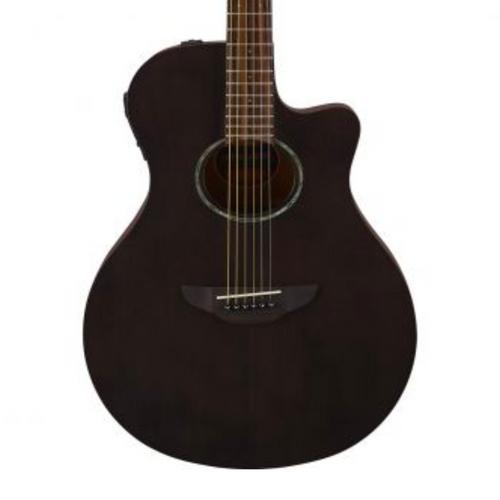
Transitioning from understanding what a thinline guitar is, let’s delve into the essential features to look for. As someone with an engineering background, I’ve learned that deciphering thinline guitar specifications is crucial for finding a guitar that aligns with your playing style. The thin-bodied guitar not only offers comfort but also enhances playability, making your selection process even more critical. When comparing models, pay attention to the quality of tonewoods, as they play a significant role in sound production. Consider the pickups, especially if you plan to perform amplified; premium electronics can significantly impact your sound quality. Furthermore, the guitar’s neck profile, scale length, and body depth are all pivotal in ensuring that the instrument feels right in your hands. By focusing on these features, you’ll ensure a harmonious match to your musical needs, setting the stage for an unparalleled playing experience. This informed approach will guide you as you explore where to purchase your perfect thinline guitar.
Where to Purchase Thinline Guitars
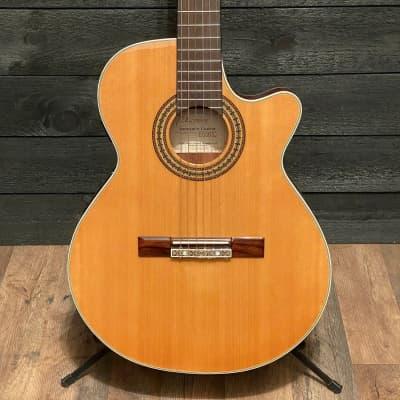
Having visited numerous music stores, I can’t stress enough the importance of exploring specialty shops when you’re ready to buy a thinline guitar. These stores often employ staff with a wealth of knowledge and passion for their craft, offering insights that go beyond basic product descriptions. Start your search by visiting shops known for their curated collection of high-quality thinline models. Beyond just trying the guitars, interacting with experienced staff can reveal nuances about different brands and models that might suit your playing style.
It’s essential to recognize that while online platforms offer convenience and often competitive prices, nothing compares to the tactile experience of handling a guitar in person. You can feel the build quality, test the sound projection, and note how the guitar fits your playing posture, all under the guidance of specialists. As you delve deeper into the world of thinline acoustics, remember: purchasing from a physical, reputable store ensures not only quality assurance but also breadth of expertise—something no online review or product description can fully replicate. Now, as you move forward with your purchase insights in mind, the subsequent sections will guide you through understanding the essential features and making informed decisions.
FAQs
What is a Thinline Acoustic Guitar?
How does the sound of a Thinline guitar compare to standard acoustic guitars?
Are Thinline acoustic guitars suitable for beginners?
What are the best Thinline acoustic guitars on the market?
How do I maintain my Thinline acoustic guitar?
Conclusion
Ready to make your decision? Let’s summarize the key points to consider for choosing the best thinline acoustic guitar for your needs. Throughout this guide, we’ve explored the intrinsic qualities that make thinline acoustic guitars unique. From their *compact design* that offers superior comfort, to the *rich, resonant sound* that belies their slim profiles, these instruments are a fantastic choice for both amateur and professional musicians alike.
Reflecting on my journey in lutherie, I believe that the right thinline acoustic guitar can elevate your music experience dramatically. Key factors include assessing the *build quality*, *tonewoods*, and *electronics* that suit your playing style. We’ve also dived into the standout features of top brands like Fender and Yamaha, highlighting their innovative craftsmanship and reliable performance.
Ultimately, whether you’re swayed by the allure of a custom-built masterpiece or the reliability of a standard model, your choice should resonate with your personal musical goals. Having equipped you with detailed reviews and comparisons, you’re now better prepared to find a thinline acoustic guitar that resonates with your sound aspirations. Embrace this journey towards finding your *ideal instrument* and let it inspire every melody.
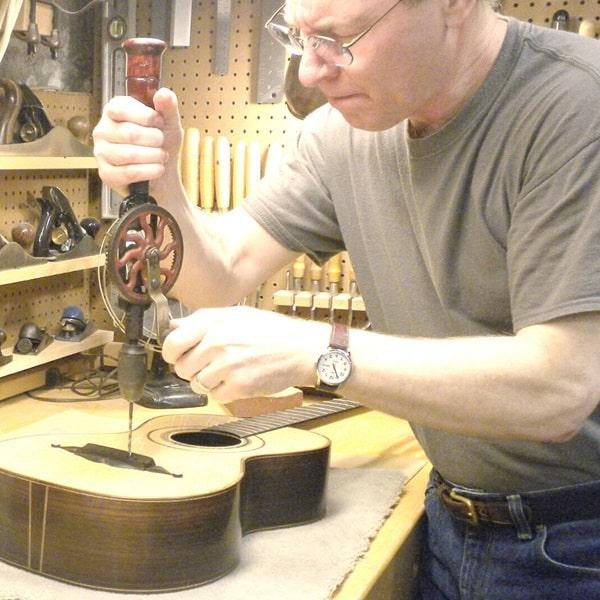
R.M. Mottola, an engineer-turned-luthier, revolutionizes stringed instrument design with his deep focus on acoustics and ergonomics since 1994. As editor of the Savart Journal and a key contributor to American Lutherie, Mottola merges science with artistry in lutherie. He enriches the field with his extensive knowledge, shared through his Liutaio Mottola website, making him a beacon in the world of modern instrument craftsmanship.
